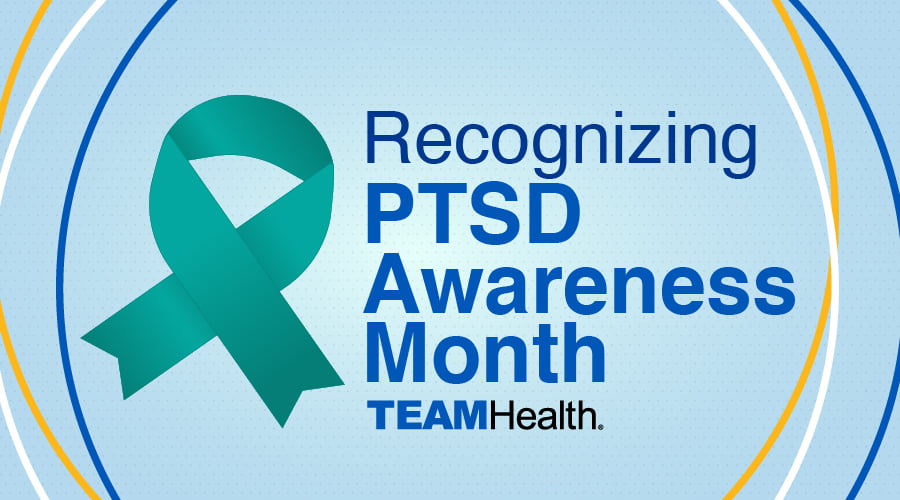By Richard Juman, PsyD, Director, TeamHealth Behavioral Health Policy and Regulations, Co-Chair, Clinician Resiliency Core Group
Healthcare providers routinely encounter situations that the general public would experience as extremely challenging, if not downright traumatizing. Witnessing the aftermath of gun violence, car accidents, and other devastating injuries, delivering bad news to families about a loved one’s fatal diagnosis or death, and observing the pain and suffering of patients are all examples of situations that clinicians are routinely exposed to. Despite the obvious emotional difficulties that many clinicians would be expected to manifest as a result of these types of life-and-death events, the prevailing expectation is that they should be able to work through a regular onslaught of such challenging moments while maintaining a constant level of emotional equilibrium. Unfortunately, many clinicians are impacted negatively by the stress of working in an environment in which challenging, and even traumatic, situations are often the norm.
The impact on clinicians’ mental health can be striking and potentially devastating. A variety of mental health issues, including depression, anxiety and suicide are found at levels that are higher than in the general population. And the level of post-traumatic stress disorder and other stress-related disorders is also a concern among clinicians, particularly those who work in emergency departments.
PTSD refers to a constellation of symptoms that may emerge in those who have been the victim of, or witness to, a traumatic event. Common symptoms include a variety of emotional factors in addition to avoidance activities, flashbacks or nightmares that connect to the traumatic event. Studies indicate that one out of every five or six healthcare clinicians meet the diagnostic criteria for PTSD. So clearly, PTSD among clinicians is not an unusual situation; rather, the level of PTSD in the healthcare field is alarmingly high and deserves specific and concerted attention.
Lingering effects of COVID-19
The COVID-19 pandemic has both exacerbated and highlighted the level of PTSD among clinicians. Clinicians in all healthcare settings were inundated with a level of suffering and death that their previous experiences did not prepare them for. They found that their ability to cure many patients is limited, as the virus is new, and effective treatments for it were lacking. And many were thrust into new roles as a result of limitations on family visitation, so that clinicians themselves acted as “family intermediaries” who became involved in death bed conversations that previously occurred privately, among family members. While everyone in the U.S. was impacted in myriad ways by the pandemic, clinicians were doubly impacted in that they had the additional burden of working in COVID-19 epicenters where their clinical and emotional reserves were both severely taxed. All of these pressures have created unprecedented stress among clinicians and increased the likelihood of PTSD and other stress reactions.
Supporting clinicians experiencing pandemic PTSD
The COVID-19 pandemic has highlighted a variety of challenges that clinicians are confronted by. More attention than ever before is being paid to the high levels of burnout among healthcare providers, and the prevalence of PTSD in the medical field should serve as a wake-up call that mobilizes the industry to do a better job of caring for those who spend their careers caring for others. The field of medicine has historically expected clinicians to “push through” their own issues, whatever they may be, in the service of helping others.
Now that the pandemic is fading, it’s time to turn our focus to the clinicians who have selflessly managed the nation through the worst public health crisis of our lifetime.”
The “status quo,” in which clinicians are afraid to report emotional distress and fail to receive the help they need must change. The new paradigm must recognize that:
- Clinicians are susceptible to mental health problems.
- Acknowledging and seeking help for emotional distress is not a sign of weakness, it’s a sign of self-awareness.
- Barriers to clinicians seeking support for psychological problems must be eliminated.
The New Normal: Prioritizing mental health for frontline clinicians
Our clinicians rose to the challenge of the pandemic; let’s return the favor by prioritizing the mental health of all of our clinicians!
For example, TeamHealth has a wide-ranging library of counseling, financial and assistance services designed to support clinicians and leaders as they navigate through the pandemic’s challenges and enter the “new normal.” We also have peer-to-peer support services and wellness activities for clinical teams.
